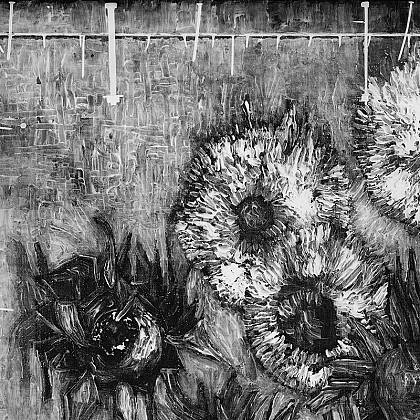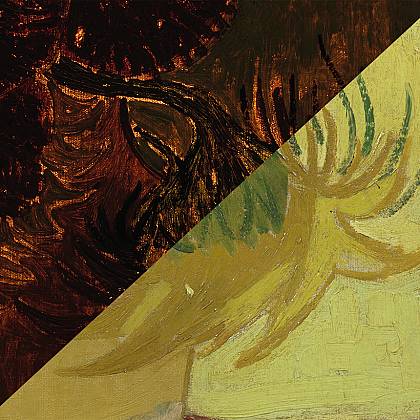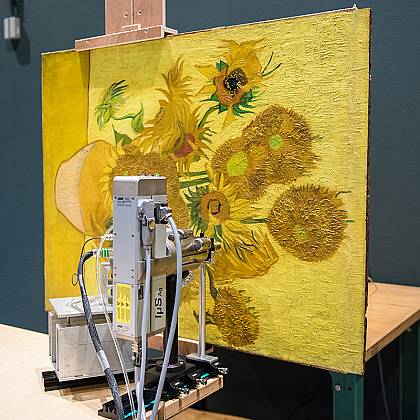Vincent's flower
Sunflowers
Why did Van Gogh choose the sunflower?
It all started in Paris, where he lived for two years (1886–88). During his time there, he noticed that lots of French artists were painting flower still lifes. Some actually specialized in the genre, which sold well.
Van Gogh began to paint flower still lifes too. He hoped to sell them, but they also let him experiment with colour and painting technique. In the summer of 1886, he painted virtually nothing other than flower still lifes.
Starring role
Van Gogh quickly focused on the sunflower, a coarse and not very elegant plant. It was probably this ‘rustic’ character that appealed to him. Other artists used sunflowers to add a splash of yellow in bouquets of different varieties of flowers, but Van Gogh gave them a starring role.
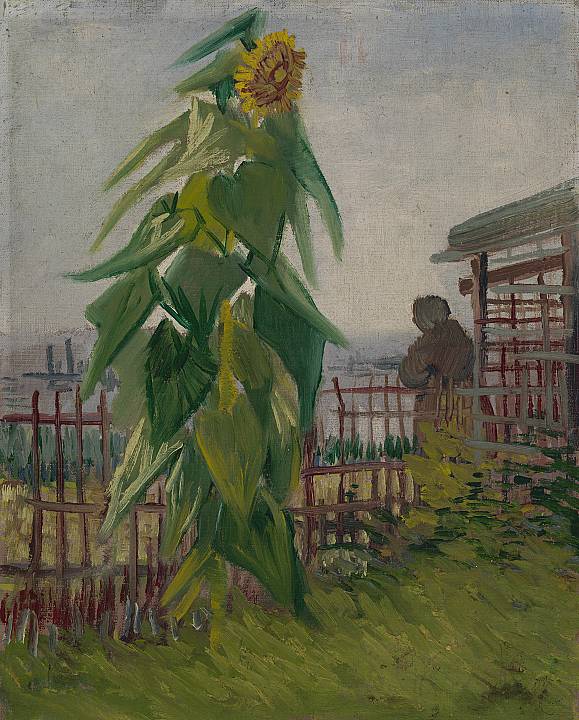
Van Gogh saw sunflowers in vegetable gardens while out walking in the Paris district of Montmartre.
Vincent van Gogh, Allotment with Sunflower, 1887,
Van Gogh Museum, Amsterdam (Vincent van Gogh Foundation)
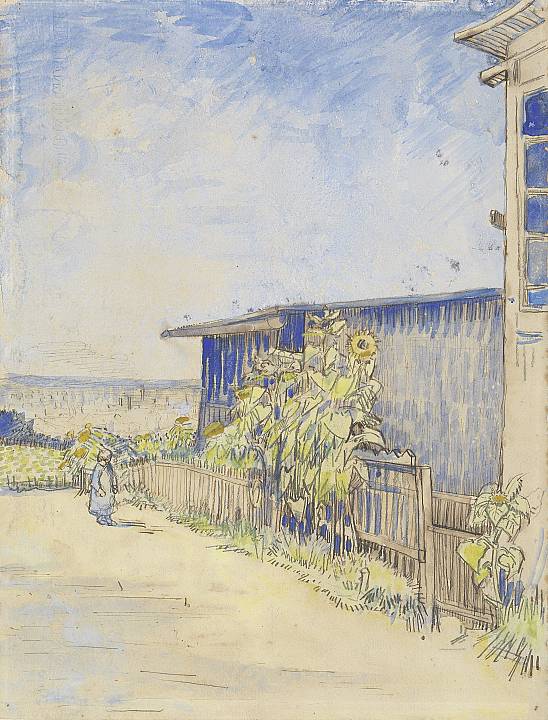
Vincent van Gogh, Shed with Sunflowers, 1887
Van Gogh Museum, Amsterdam (Vincent van Gogh Foundation)
Van Gogh began with still lifes of flower heads gone to seed. After leaving Paris and moving to Arles in the south of France, he painted large still lifes with vases of sunflowers. Those masterpieces now hang in museums all over the world.
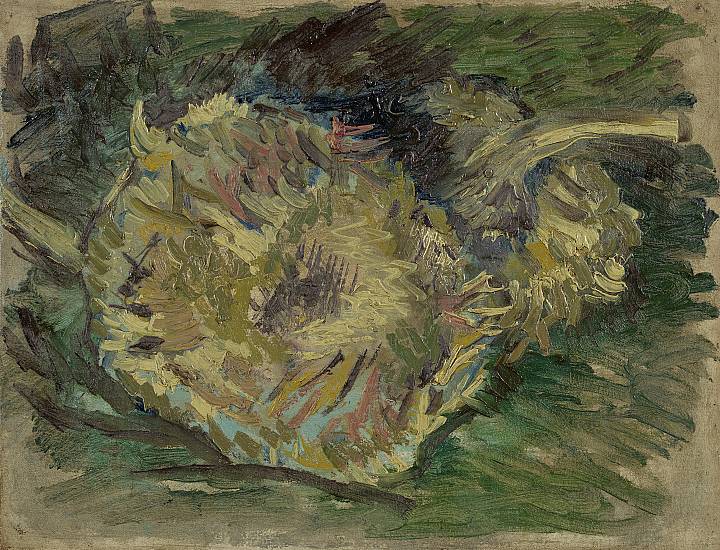
Vincent van Gogh, Sunflowers Gone to Seed, 1887
Van Gogh Museum, Amsterdam (Vincent van Gogh Foundation)
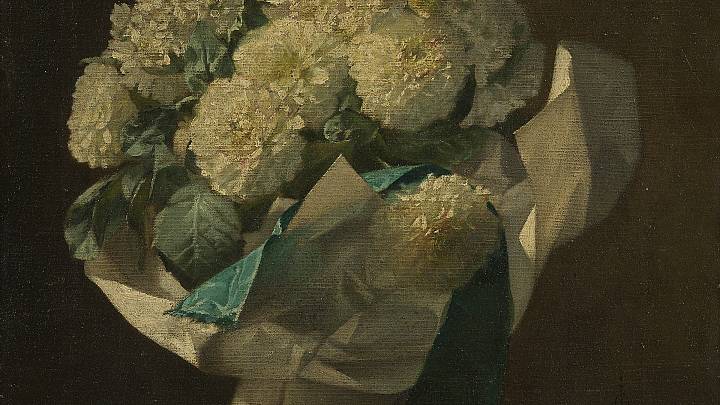
Some 19th-century painters specialized in a particular flower. Jeannin, for instance, was known for his lush peonies.
If Jeannin has the peony, Quost the hollyhock, I indeed, before others, have taken the sunflower.
Vincent van Gogh to Paul Gauguin, 21 January 1889
